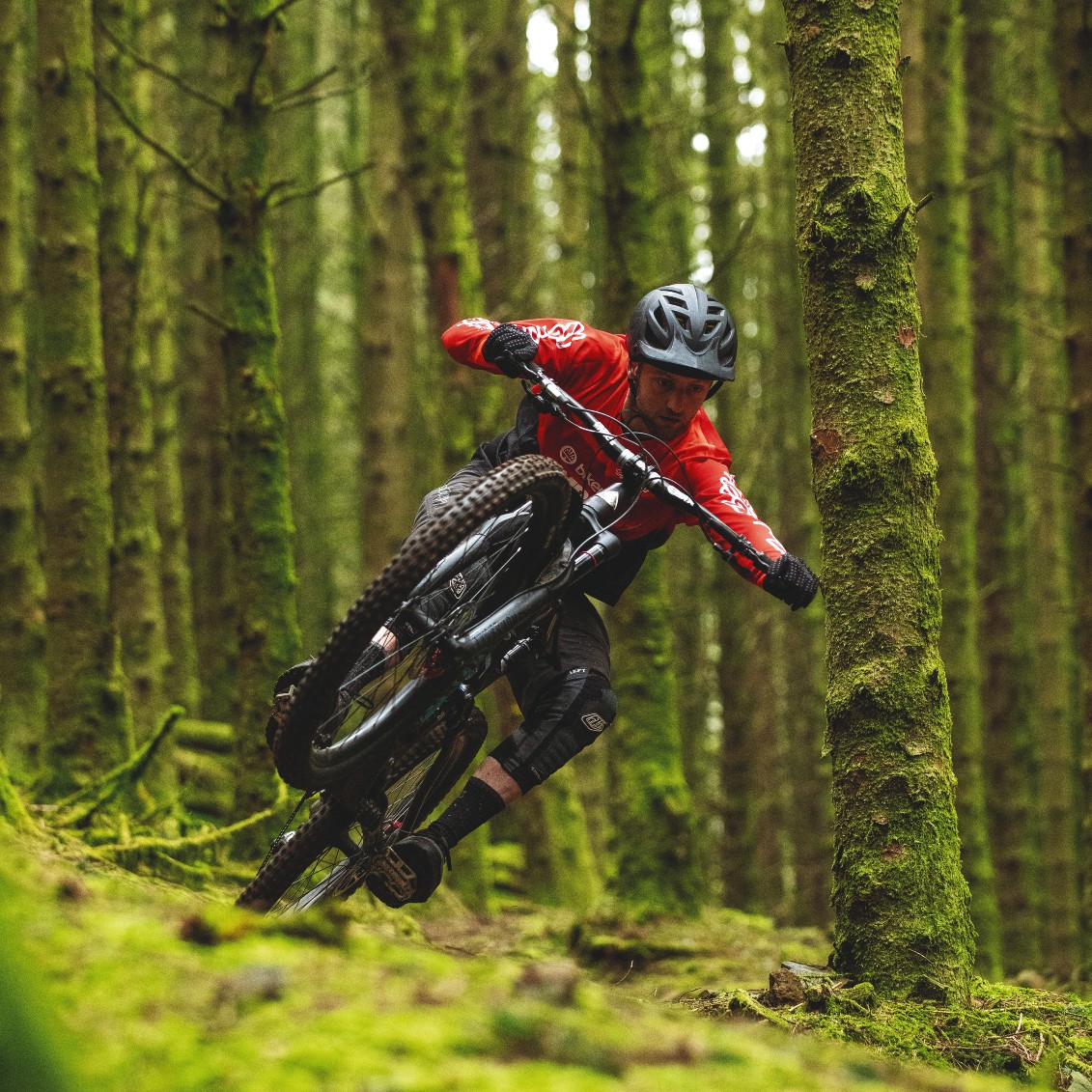Every now and again a letter or email lands in our in-tray that makes us stop and read it again. ffinlo Kilner's tale of riding from Land's End to John O'Groats with his two teenage sons, off-road, in one go and self-supported, was one of those. This is his story. Hopefully it'll inspire you to get out there and find an adventure. Remember, if you've been up to anything exciting, then email your letters and photos to mbuk@immediate.co.uk and you could win a prize!
Adventures along the pink line
We were standing on a path choked with fallen trees. It looked as though a great wind had flattened half the firs in our vicinity and they were lying, stacked at angles, across the path to a height of perhaps 12ft. In front of me, the boys – Ned (15) and Billy (14) – were manhandling a bike loaded with luggage through a gap between two fallen trunks, 6ft up in the air. They were arguing. All around us was a dense foliage of gorse, bracken and brambles. I sliced at the thicket with my multi-tool, in the hope of squeezing our laden bikes through a gap. It turned out to be a futile effort and we learnt another lesson from our bikepacking journey.
It all began 18 years ago, when I walked from Land’s End to John O’Groats in an attempt to make sense of my brother's death in a car crash. I told tales of the walk to my children and Ned started asking when we could do an adventure like that. To fit it into a school holiday, it would have to be a bike ride, and because bikes and traffic scare me, it would have to be off-road. So I started to plan a journey that, in the end, would prove both more difficult and more fun than the original.
I trawled the internet, found an end-to-end route from 2003 and spent some weeks tweaking it, cutting it into 50-mile sections and uploading these to my sat-nav. The outcome was a 24-day trip, with roughly 1,200 miles of off-road riding, connected by sections on backroads, that comprised about 40 per cent of the route. I could look at the maps and imagine what it'd be like to ride, but I had no idea what it'd be like in reality. I was almost always wrong, but what I did know was that one way or another, this pink line down the length of the country would deliver us an adventure.
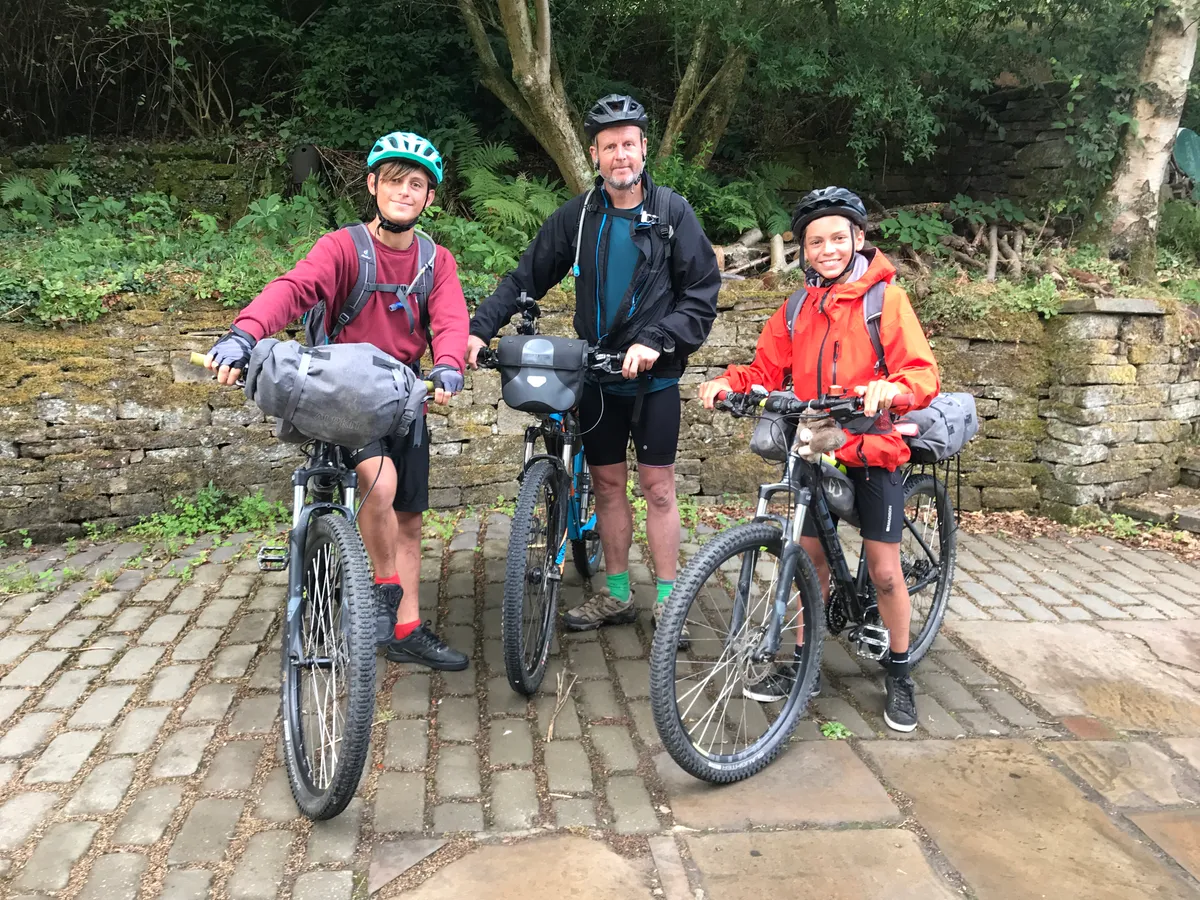
At Christmas I bought the boys two cheap Cube Aim Pros and myself a Cube Acid to replace my early '90s, Reynolds 853-framed Dawes, and this transformed our riding to the extent that I thought that maybe we could do a long-distance adventure. We provisioned light. I bought bikepacking bags and a lightweight three-man tent from Alpkit, sleeping bags and roll-mats, and by June we were ready. The bikes would have handlebar bags, frame bags and saddle packs, so they'd ride like (heavy) mountain bikes.
My bike had a hub dynamo to charge a powerbank, which in turn charged the sat-nav. This turned out to be a pointless expense, because I couldn’t pedal fast enough for long enough to charge it. We carried enough food and drink for three days of wilderness cycling and took nothing we didn’t absolutely need. People constantly told us they couldn't believe we were carrying enough to be self-sufficient.
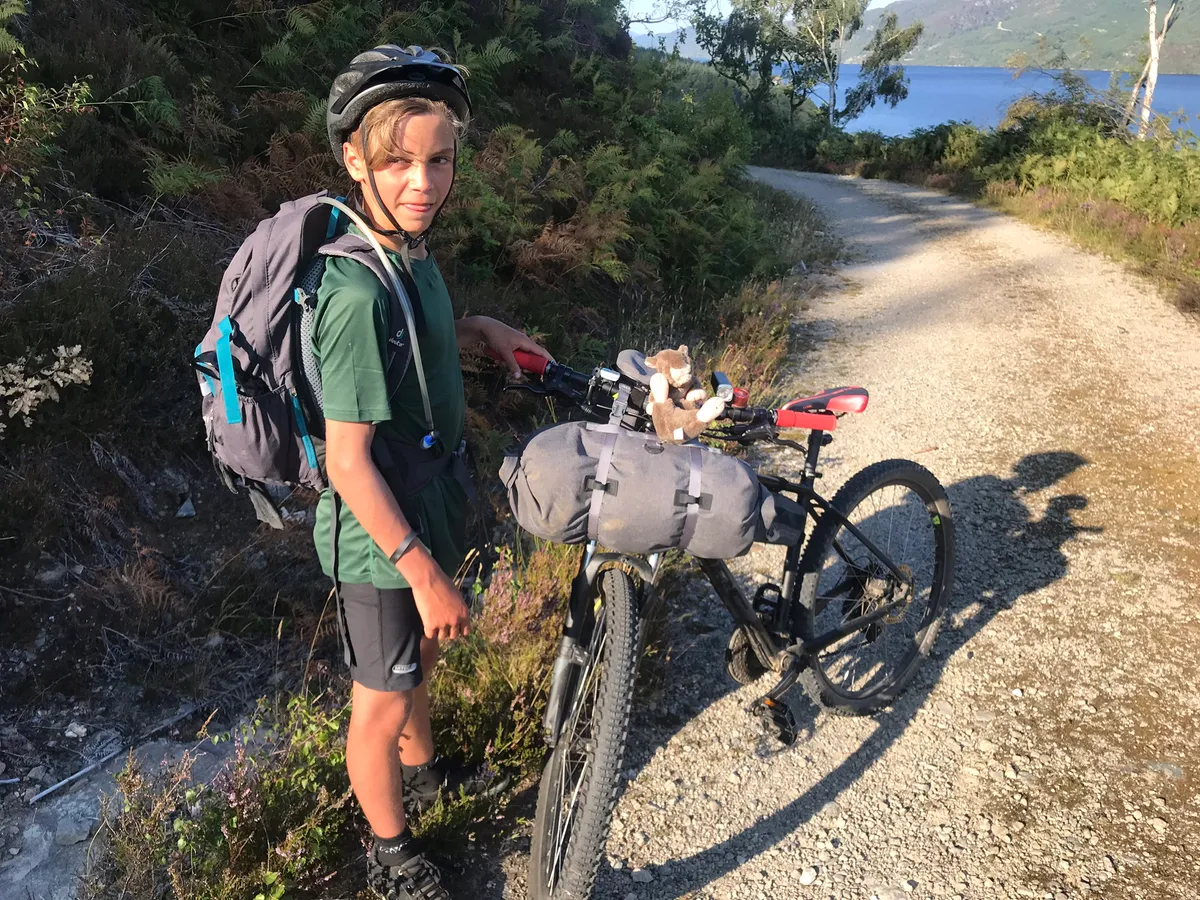
It was on day two that the scale of the adventure began to become clear to us. After a first day of rolling backroads, which became sandy tracks over the empty but horsefly-infested Flow Country, we headed into our first mountains, towards Loch Choire. We pushed and pedalled our way to the watershed, with expectation of a downhill payoff on the other side, only to find a trackless wilderness of bog and hummocks all the way to the Crask Inn. A heart-breaking struggle for two hours just to make four downhill miles.
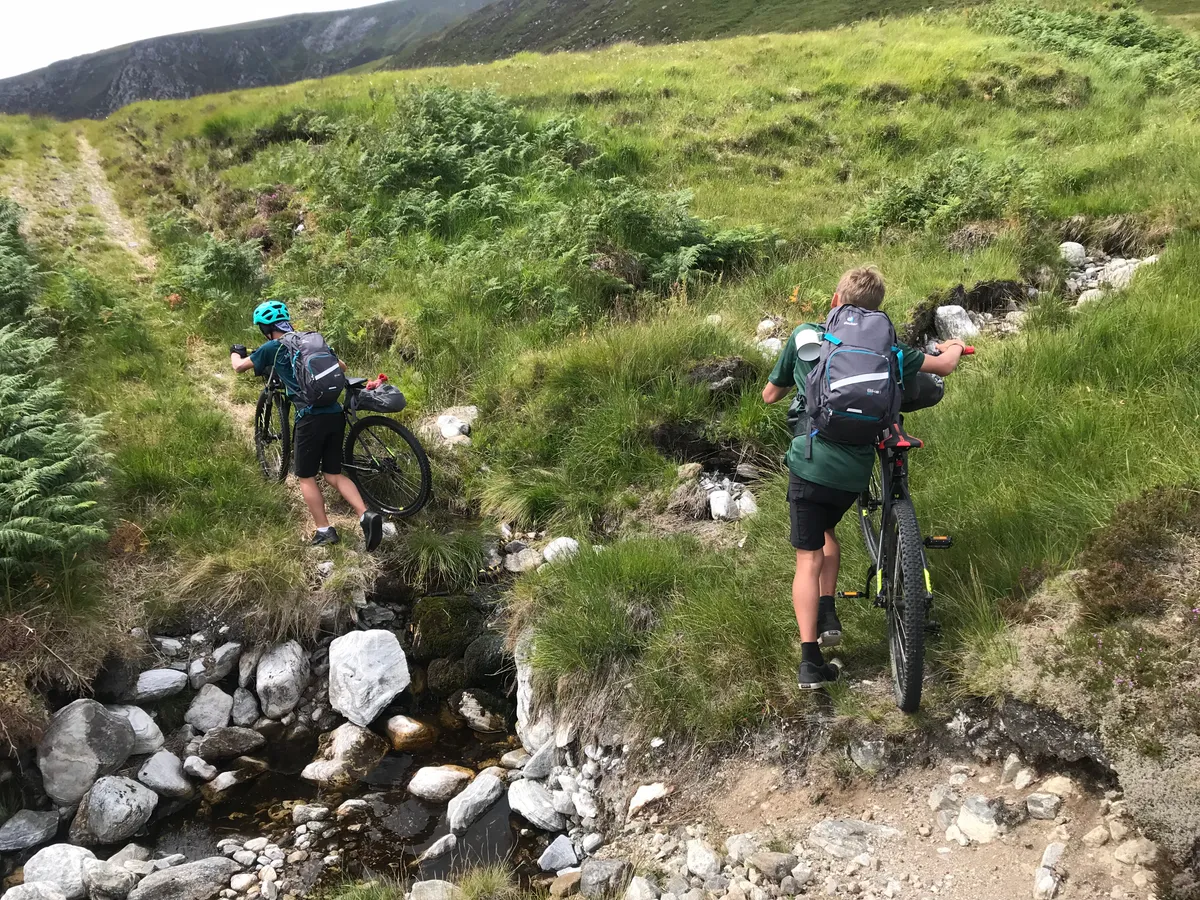
News reports had been claiming that it was a great year for horseflies and so it proved. As we cycled, I'd turn my head to see a cloud of them flying alongside me. Since a horsefly can travel at 90mph, outriding them was impossible. Mostly, but not always, they didn’t bite if we kept pedalling, so whenever one of us needed to stop to go to the loo, the other two would cycle in circles, or dismount and dance around waving our arms in the air.
In the first four days, we passed just two shops and two pubs. We felt adventurous and free, but our contact with the bicycle became increasingly problematic – our backsides were so sore we shifted around continually, our feet ached on the pedals and my right hand became numb to the extent that I could barely change gear. All these things improved as we headed south. Either that or we just grew used to them.
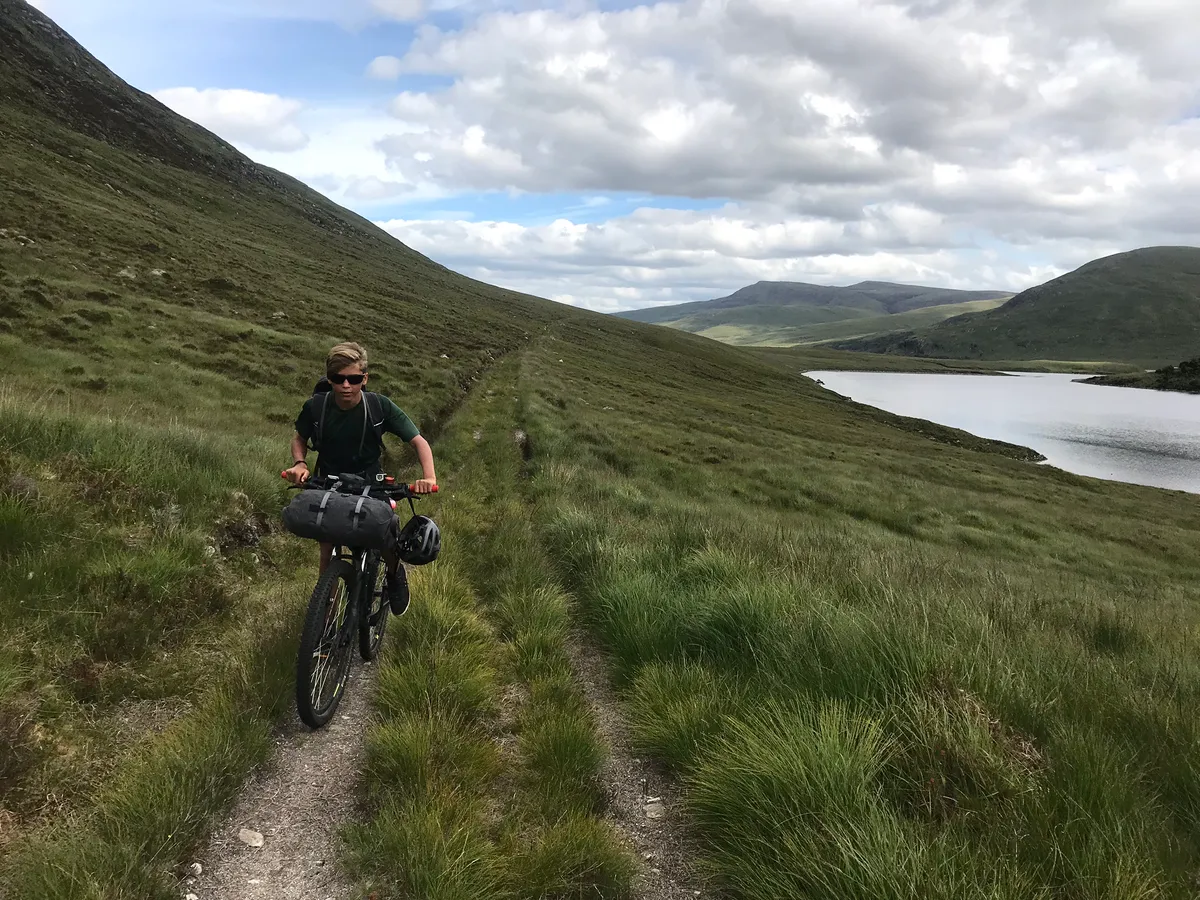
We followed the pink line on the sat-nav and mostly this made navigation easy, but when it went wrong, things got difficult quickly. Having carried the bikes through and over the fallen trees, we discovered that the path dwindled to nothing among head-high gorse. There was no way through. So, with heavy hearts, we dragged the bikes back the way we’d come. We learnt the importance of a thorough recce that day.
Further on, in Cornwall, some 15 miles from the end, the pink line took us over barbed wire and through deep, soggy ruts. The track deteriorated steadily until it was just a narrow snicket between head-high gorse, bramble and hawthorn. Soon, our shins were running with blood, and this went on for miles. At one point, having fallen on my butt in gorse twice in five minutes, I could see the track but was almost sobbing with frustration at the effort of trying to drag the bike through the undergrowth to get there. A journey that we'd guessed would take three hours took five.
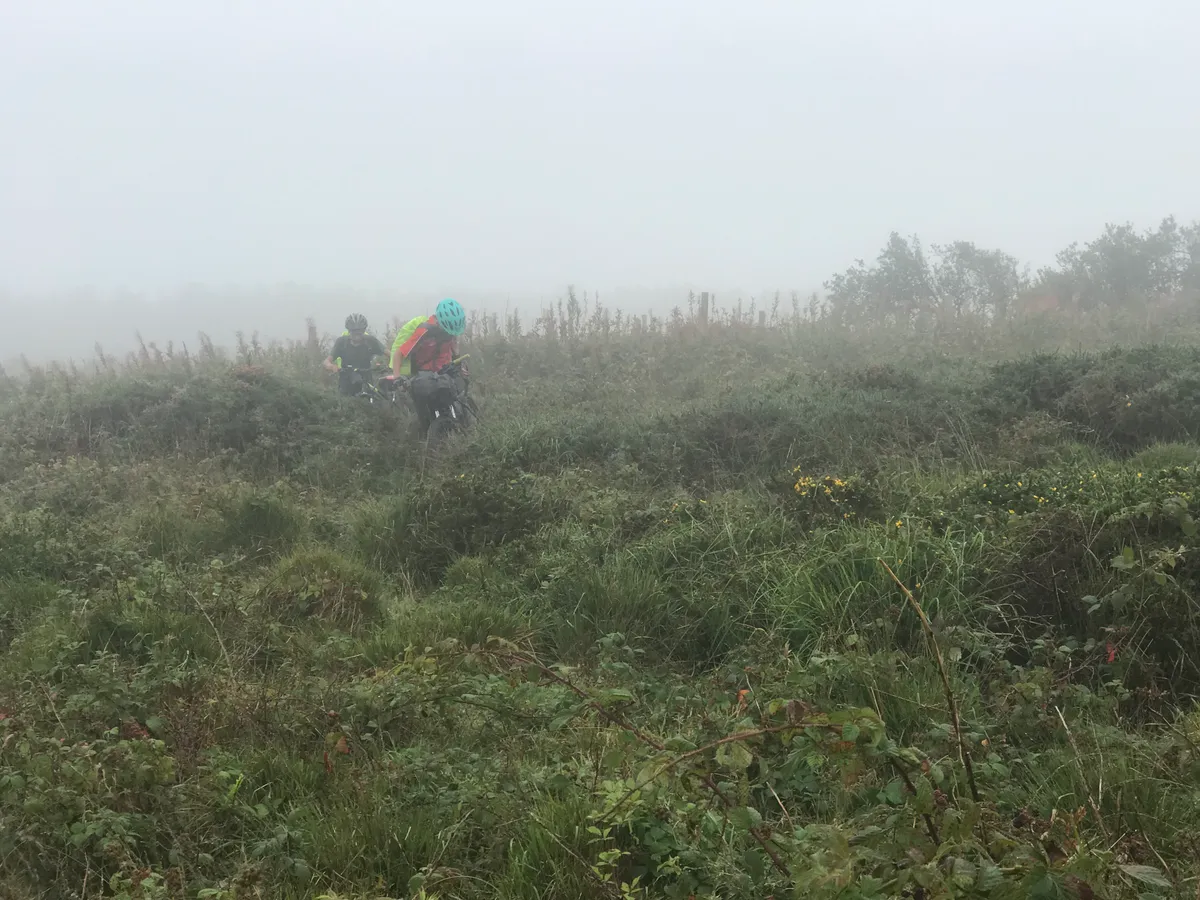
In the Pennines, we needed serious repairs after the day-to-day beating we’d been giving the bikes. We were descending the hills on fast, rocky tracks, accompanied by the rattling, scuffing sounds of machinery being ruined. The boys’ bikes required new chainrings, chains and cassettes, and my bike needed bearings and brake pads. They all had dinged rims and loose spokes. It was a big bill (over £600), but it kept us on the road to Land’s End and I'm a lousy mechanic.
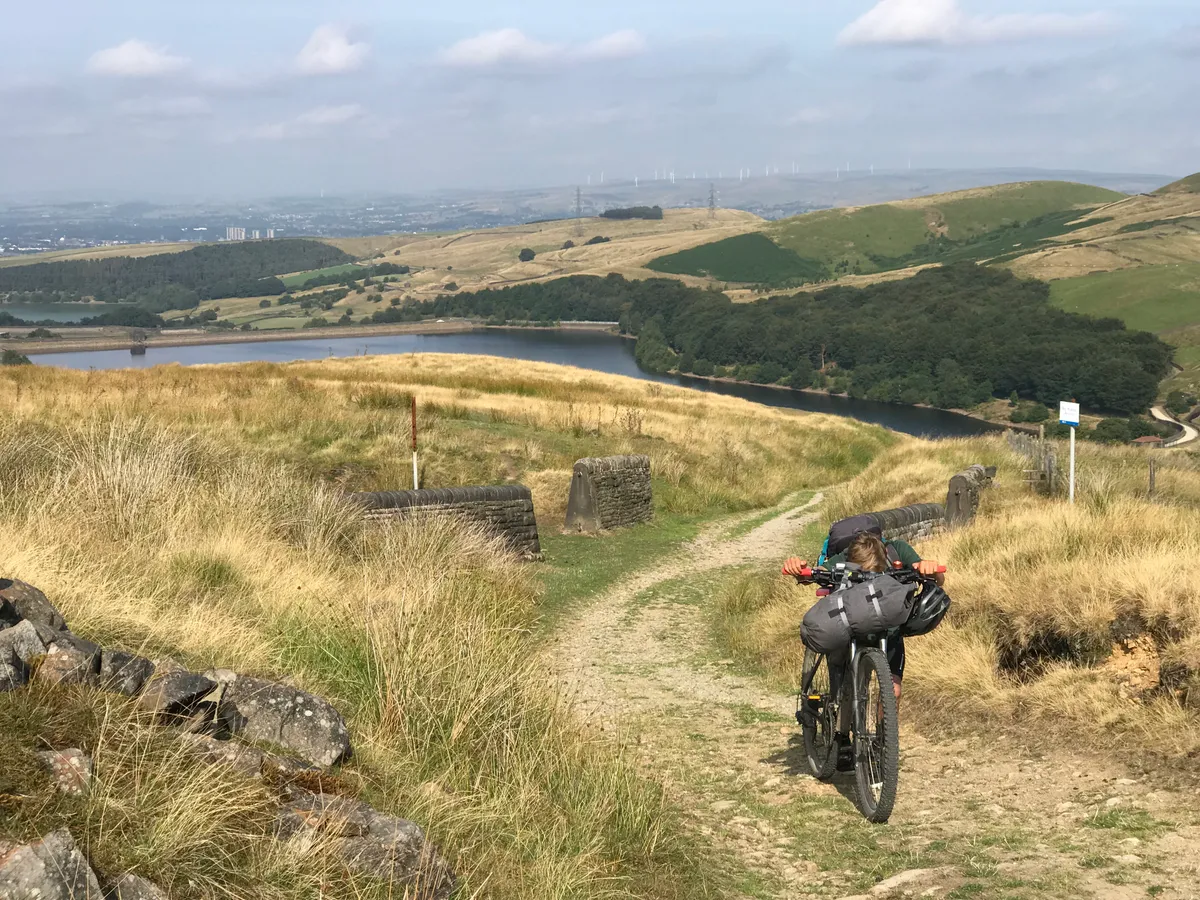
We all managed at least one over-the-bars crash, but none of us sustained any real injures, other than Billy’s bloodied knees from a cartwheel into a stream and Ned’s high side at the bottom of the Devil’s Staircase on the West Highland Way. Where he crashed, the air was so full of midges that he rode with his mech hanger pinging until we were out of range before stopping to tighten his loose spokes.

In Gloucestershire, it was my turn. We were taking a path down beside the River Severn (which resulted in us having to lift the bikes over stiles every half mile) when we came upon a muddy stream crossing. A slippery track ran down to a 6in drop into the water and I thought, “I can do this”. I rolled down the slope, jumped off the edge and immediately described a disgraceful arc over the front wheel, falling face-first into a foot-and-a-half of mud.
My feet were tangled in the rear end of the bike, which immediately began to sink. “Get the bike!” I shrieked at the boys, as the electronics vanished into the mud. I was stuck in a push-up position, face just out of the mire, while the boys dragged the bike free and hauled me out. The powerbank never worked again and the sat-nav thereafter refused to charge and only worked on batteries.
That was the night we met my brother and his family for dinner in Bristol. He runs a shop, Bike Workshop, and I must have looked like the world’s most incompetent cyclist when we rolled up, covered as I was from head to toe in river mud!
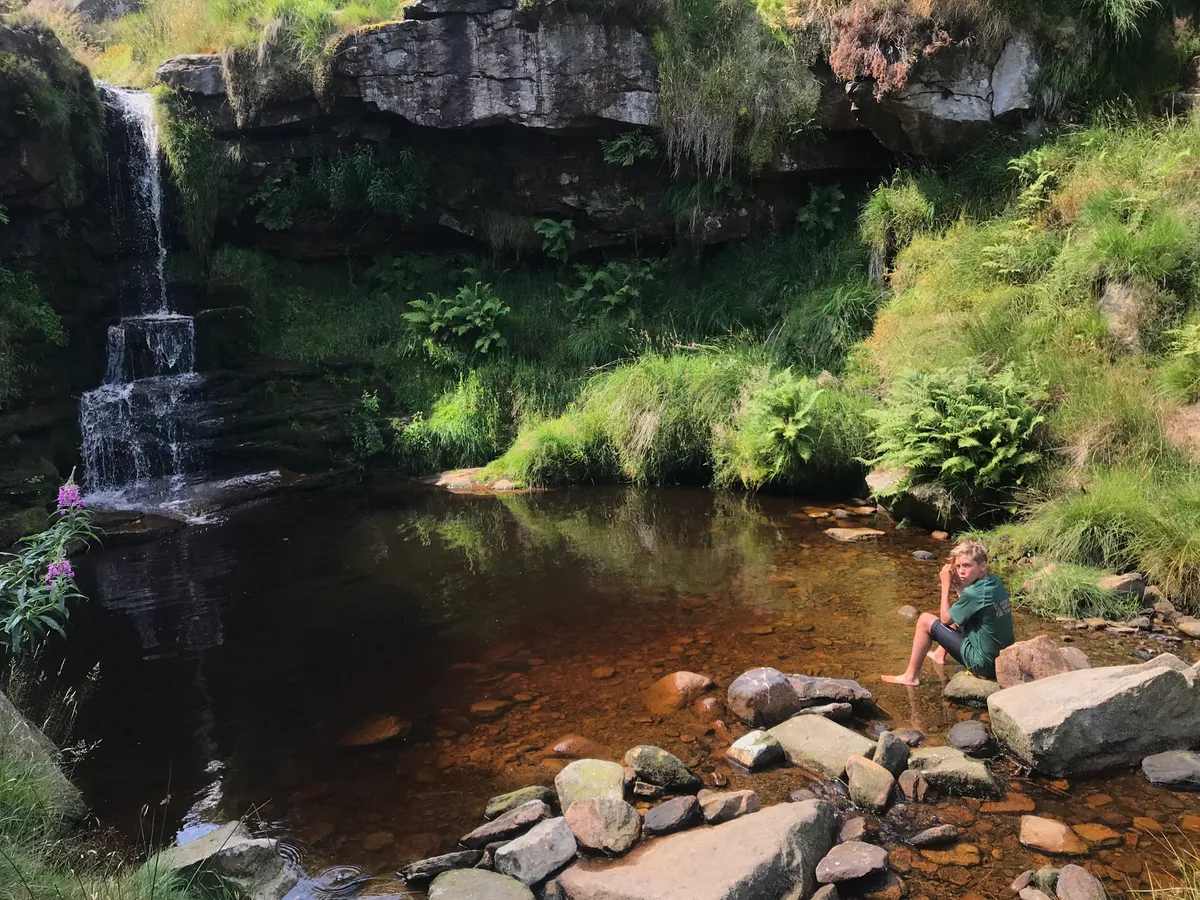
As we celebrated our first glance of the towers of the old Severn Bridge, we crossed the motorway and dodged through an area of devastation around Avonmouth, where bushes were draped with streamers of grey plastic and the culverts were clogged with lumps of multi-coloured refuse floating in algae. The air smelled like old feet and burning plastic bags, and in an underpass where a sign read ‘no lights in underpass due to fire damage’, a burnt-out car was (weirdly) stuffed with traffic cones, which glowed orange in the blackened interior.
We went on through burnt-out fields overlooked by jostling blocks of flats and cycled over the Avon on the M5 bridge, with the mind-numbing roar of traffic to one side and a dizzying drop to suburban gardens below us to the other. From there, we crossed parkland on our return to the wild.

We camped high on the Quantocks, under some trees and out of sight of watching eyes. The alternative, which none of us fancied, was to come down off the ridge and find a campsite at the bottom, only to have to climb back up again in the morning. Bedded down behind the bracken in a small hollow, the boys kept rolling into me and most of the night was spent in a jostle of elbows and knees.
I awoke with a start in the early hours to the sound of someone trying to drag the bikes away. I leapt up, unzipped the inner and stuck my head out. I could see nothing. I told myself I was being stupid but couldn’t shake the feeling of unease. Three times this happened and just as I was about to leap out with my multi-tool unfurled, the thieves let out a loud, "Baaaaaaa!". The rest of the night was a riotous assembly of bleating, neighing, slithering and crunching. Who knows what it all was, but I heard it all.
Exmoor threw everything at us. Leaving Dunster by a vertical byway up through the woods, we reached a high track where the flies whirled around us like a thick black halo and I kept having to clear the sat-nav screen of them. A woman walking the other way was similarly afflicted and waved her hands about in an awful greeting. The hill then dropped us down into the village of Wooton Courtenay, via a slick chute of red mud and rubble that was so steep we just hung on and hoped.
An equally steep three-mile ascent to Dunkery Beacon eventually revealed views across to Barry Island and Lundy floating in the Bristol Channel as if it were Avalon. From there, the tracks disintegrated into rutted moorland and we alternated between pedalling and pushing for miles, into a wind that grew in strength and leant hard back against us. Finally, in despair, we took a track off the hill and down to Simonsbath. Thankfully, the pub had had a makeover since I'd camped there, on a dog-turd-covered lawn, 18 years previously.
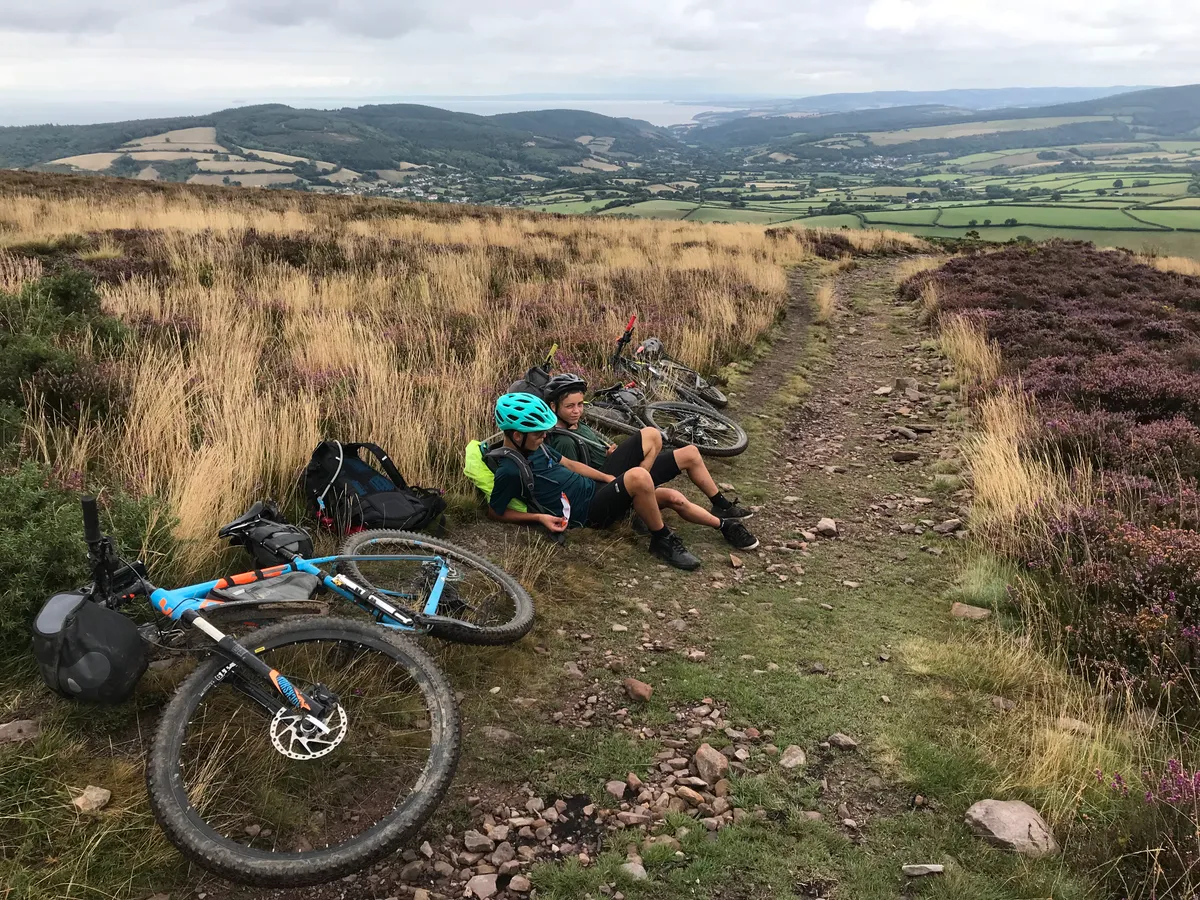
The most terrifying two miles of the ride were on the A30 across Bodmin Moor, where cars, buses and lorries blasted past at perhaps 70mph faster than us. Eventually, we threw the bikes over a barbed-wire fence and escaped. By the time we reached Land’s End on August 19, we'd cycled around 1,200 miles, with 100,000ft of vertical ascent. We averaged between 7mph and 8mph overall, and our skills and fitness improved as we went. We learnt to descend steep, rocky tracks and climb hard, unforgiving hills.
None of us suffered any major injuries, and padded shorts and chamois cream were saviours. We fell in love with Scotland and with the high moors. The Midlands, not so much. We combined naivety in thinking we should do it with stubbornness in refusing to stop. And in this way, we found ourselves an adventure just round the corner from home. It took me two weeks to get back on the bike afterwards. But I still love off-road cycling.
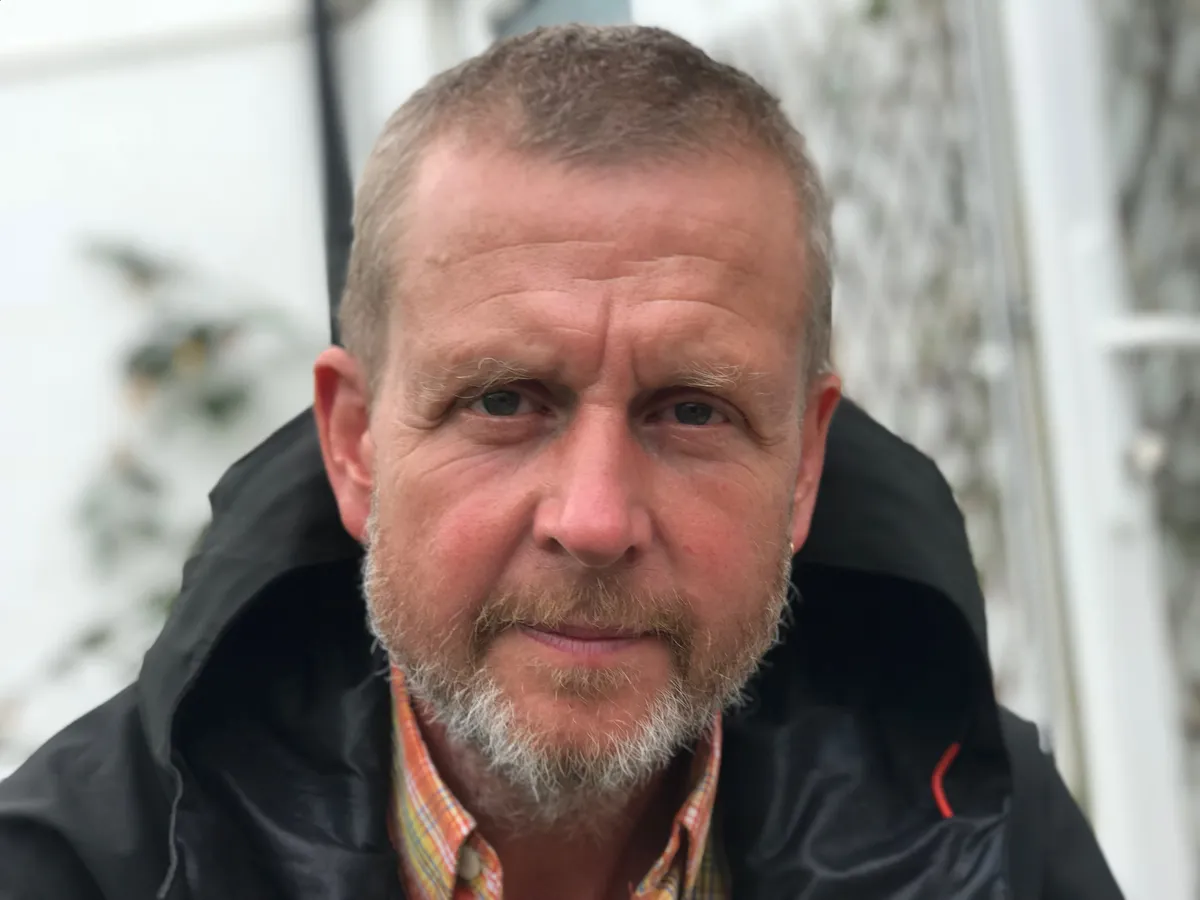
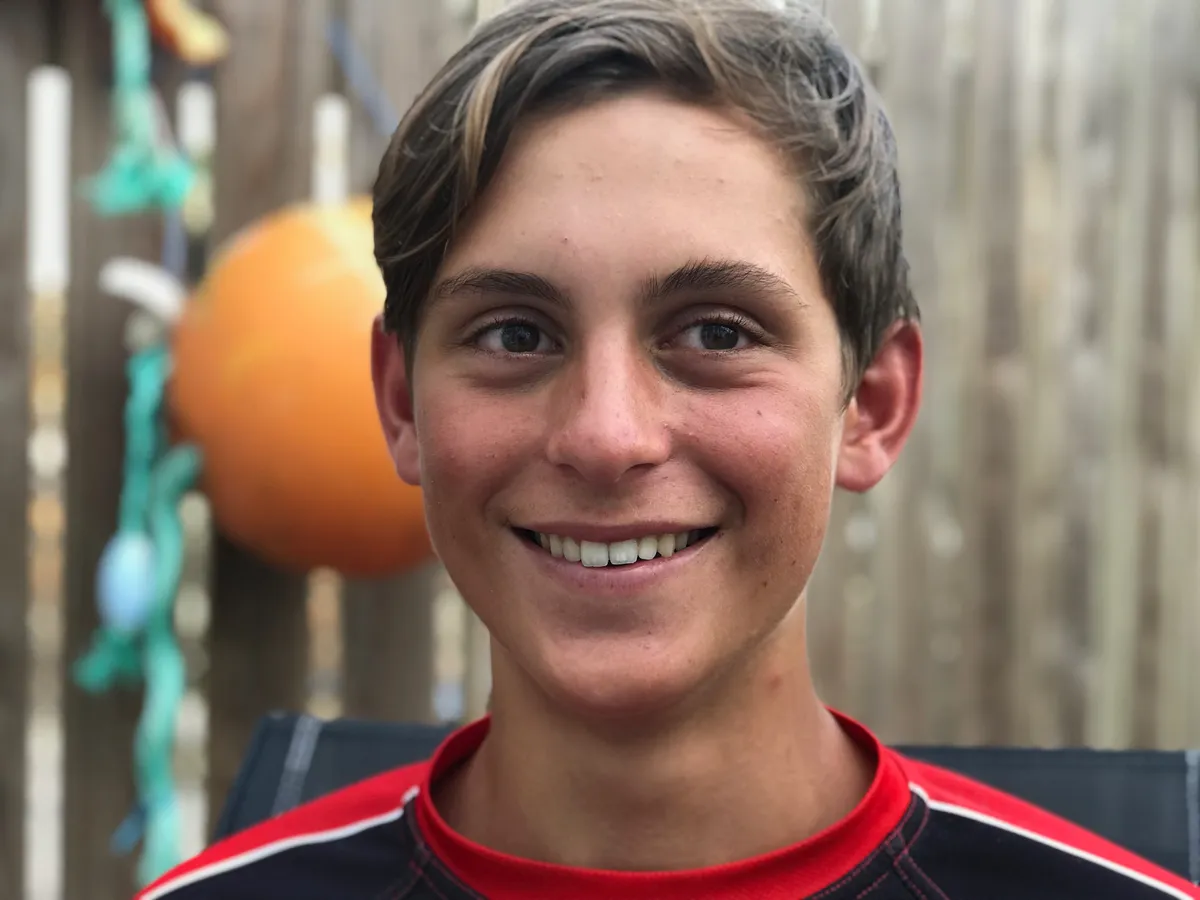
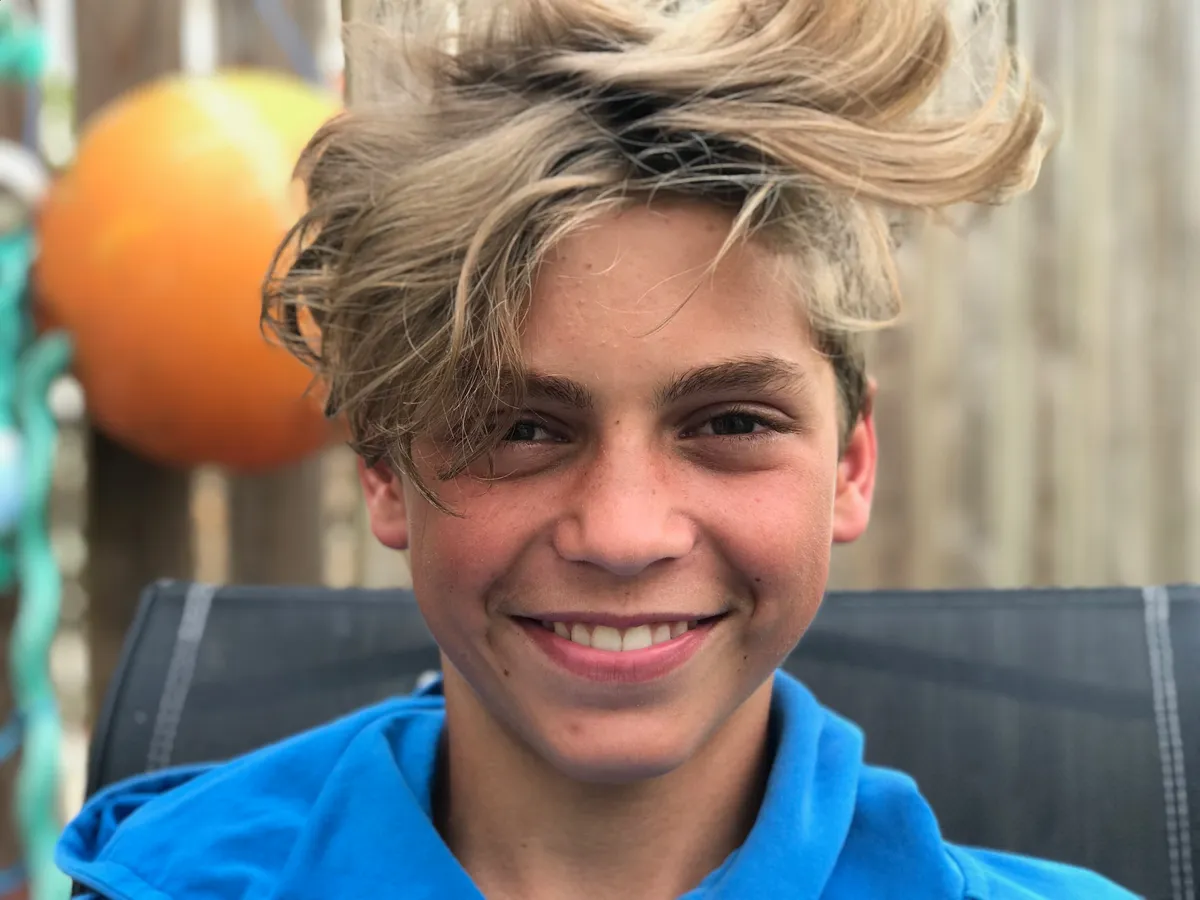
Submit your stories and letters to: mbuk@immediate.co.uk
You can subscribe to MBUK here and check out our Facebook, Instagram and Twitter accounts for all of the latest mountain bike action.
And don’t forget to sign up to our newsletter!
